Fitkari in English । Top 10 Benefits, Types, Formula & Uses
The word “Fitkari” is known as “Alum” in English, Fitkari is a Hindi word that is also pronounced differently such as “fitkari”, “fatakadi” “pichakaree” “phatkari” or “phitkari”. Alum has been used for centuries in various cultures as a natural remedy and a versatile ingredient for various purposes. However, it should be used with caution, as high doses of alum can be toxic and cause health problems.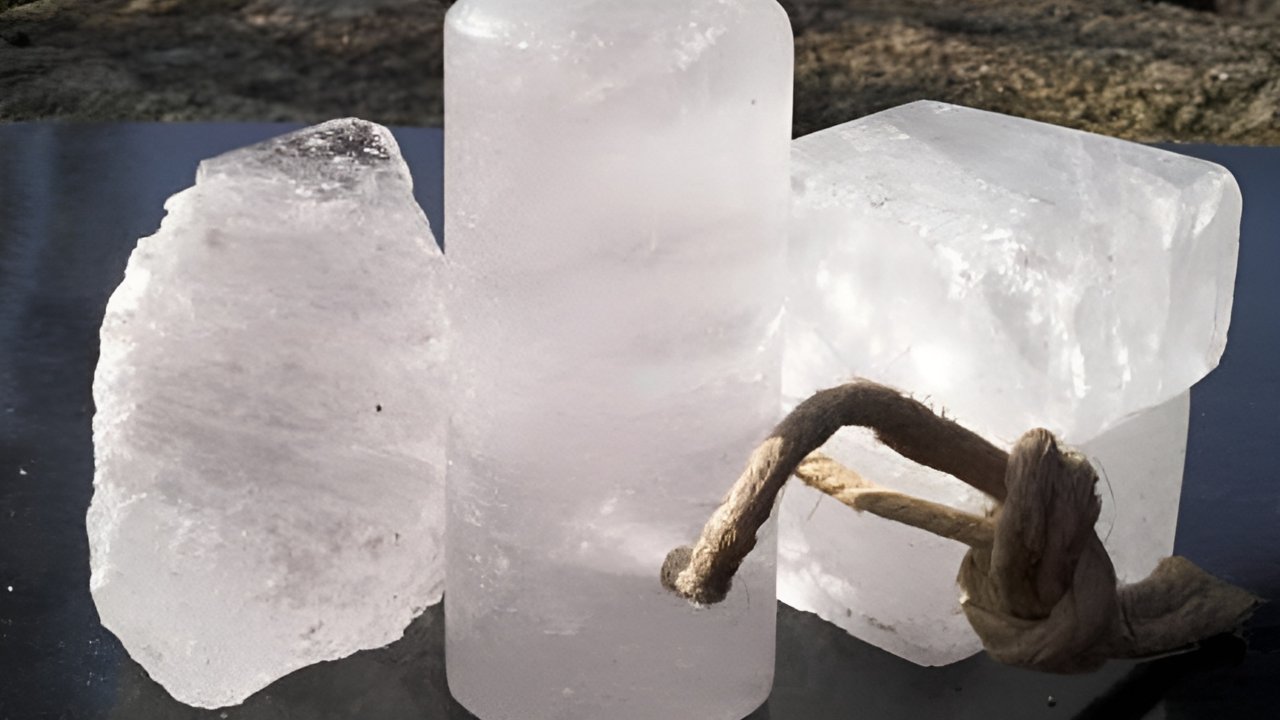
The most commonly used fitkari is for water purification, leather tanning, in the preparation of food like baking powder and pickling, in cosmetics products like deodorant, as antitranspirants, and for making fire-proof paper and cloth.
There are varieties of fitkari (alum) but the most commonly used for household purposes is potassium alum. It is no wonder that alum has been used since ancient times for its many wonderful uses. Today Alum is available in various sizes and shapes as a fine powder, or even in blocks.
What is fitkari (Alum)?
Alum or so-called ‘alumen’ is odorless, colorless, and transparent, which are found in crystalline blocks or granular powder with a sweetish astringent taste. It, when heated, melts at about 200º; it loses water of crystallization with the formation of the anhydrous salt.
Although ‘alumen’ is a substance that was found was found naturally on the earth for centuries. Still, the word ‘alumen’ was first described by Pliny in a book called “Pliny’s Natural History” he calls it ‘salsugoterrae’ Alum is also known as Potash alum (Potassium Aluminium Sulphate) it is an inorganic salt.
What Is Fitkari Called In English?
Fitkari is the regional Indian word called for the substance name “Alum”, which is in addition recognized by many names such as Potassium Alum or Potassium Aluminum Sulphate. Fitkari is also called phitkari or saurashtri in Ayurveda which has frequently been used topically and internally in traditional systems of Unani medicine, including Ayurveda.
In Unani medicine, Fitkari was used for various treatments due to its astringent, analgesic, hemostatic, desiccative, expulsive for fetus and placenta, antipyretic, detergent, corrosive, expectorant, emetic, and irritant properties.
It was believed to be the every-in-one solution for health-related problems in our daily life. Besides this Fitkari has also been of great importance in Traditional Chinese Medicine they called it “Ming fan”.
Other Names Of Fitkari In
- English: Alum, Potash, Sulphate of Aluminium, Ammonium, Aluminous Sulphate.
- Arabic: Zaj abyaz, Shibe yamani.
- Persian: Zak safed, Zamah.
- Bangali: Phatphadi, Phatkiri.
- Marathi: Phatki.
- Sindhi: Patki.
- Urdu: Phitkari.
- Hindi: Phitkari, Fitkari.
- Tamil: Patikaram, Padikharam, Shinacarum, padikara kal.
- Telgu: Pattikaramu, Patika.
- Kannada: Phatikara, Patika.
- Sanskrit: Sphatikari, Surashtraja, Kamakshi, Venmali.
- Malayalam:Fatakadi or Phatakadi
- Gujarati: Phatakadi.
Fitkari Chemical Name, Formula, Alum Types
Generally, when you hear about Fitkari (alum), it is referred to as potassium alum, which is the hydrous form of potassium aluminum sulfate with the chemical formula KAl(SO4)2•12H2O. However, there are other compositions with the formula AB(SO4)2•12H2O that are also considered to be alum. Below are the best examples of them.
1. Potash Alum
Aluminum potassium sulfate is also recognized as potash alum it is used as an astringent and antisepsis in different food preparation methods such as pickling and fermentation and as a flocculent for water purification together with other things.
Molecular formula: KAl(SO4)2•12H2O
2. Soda Alum
Soda alum mainly occurs in nature as the mineral mendozite. It is very soluble in water and is extremely difficult to purify. It is used in acidic food as well as in the manufacture of baking powder.
Molecular formula: NaAl (SO4)2•12H2O
3. Ammonium Alum
Ammonium alum is also known as Ammonium aluminum sulfate. It is white crystalline and has double sulfate of aluminum. It has varieties of uses such as vegetable glues, water purification, deodorants, in porcelain cement besides this it is more commonly used in fireproofing textiles, tanning, and dying.
Molecular formula: NH4Al(SO4)2•12H2O
4. Chrome Alum
Chrome alum is also known as Chromium(III) potassium sulfate it is the potassium double sulfate of chromium. It is produced from chromate salts or from Ferro’s chromium alloys. It is used in the whipping of leather as Chrome alum regulates the leather by connecting the collagen fibers within the leather.
Molecular formula: KCr (SO4)2•12H2O
5. Selenate-Containing Alums
Alums are also known that contain selenium in place of sulfur in the sulfate anion, making selenate instead. They are called selenium- or selenate-alums. They are strong oxidizing agents.
Molecular formula: (SeO42-)
6. Aluminum Sulfate
Aluminum sulfate is sometimes termed as an alum in an informal way, but it is a very distinct form of alum and its usage is not considered technically correct. Its properties are comparatively different from those of the set of alums described over.
Molecular formula: Al2(SO4)3
Health Benefits & Uses Of Alum ( Fitkari )
Alum or Fitkari is very useful in day-to-day life; it can help us to prevent enormous health issues. From beauty care to serious or light injuries so every home should have it. Below are some of the best uses of alum.
1. Best Treatment For Head Lice
Getting rid of lice is a long and difficult task, unfortunately, lice infect many people. People are always looking into methods to get rid of the lice such as cream shampoo, medicine, or any home-based remedy they suppose will work.
It doesn’t matter which method you adopt; however, Alum can be the best natural and effective way to get rid of hair lice. Alum (Phitkari) is also a well-known remedy mentioned in Ayurveda for lice.
How To Use:
- Take 4 grams of Alum powder with ½ liter of water, and mix them well.
- Now apply this mixture to your scalp and leave it for 30 minutes.
- Then rinse off your scalp and hair with herbal shampoo.
- If you apply this regularly, you will definitely see a reduction in the head lice.
2. Benefits of alum for skin
Acne or pimples is common during the teen years and upsets around 85 percent of people for some time during their lives. If you are suffering from acne, you might have tried out various treatments and tend to have similar kinds of questions about its treatment.
The answer is quite simple use alum for Acne or pimples, as it is rich in astringent with antiseptic properties; it can clean and disinfects the skin. Astringents also contain a kind of antiseptic effect, applying them to your skin can give your skin a grain-free complexion, pimples, and blackheads. The Astringents properties also remove the dead skin cells from your skin’s surface.
How To Use:
- Take 1 spoon of Alum powder, 2 spoons of Multani mitti (Fuller’s earth), and 2 spoons of Rosewater.
- Mix all three ingredients thoroughly and make them into a fine paste.
- Now apply this paste over the acne or pimples and leave it for 10 to 15 minutes.
- Then wash your face with lukewarm water.
- As alum is a good healing agent, it will aid in lessening pimples, and Multani mitti is a very effective remedy for shining on skin tan and pigmentation as well.
3. Good For Canker Sores
They go by various names canker sores, mouth ulcers, aphthous ulcers, etc., whatsoever you call them, but if you get canker sores, you experience the true meaning of pain. It nearly affects about 20% of the population so you might also have come across it at a certain time.
They hurt a lot and keep you from eating normally and even talking like a human being. They’re an uncomfortable and serious issue to get ridge of it immediately. In this Alum, a powder can be the best it is an effective home remedy for the healing of canker sores or mouth ulcers.
How To Use:
- Take ½ spoon of fitkari powder you can also use an Alum block by crushing it to powder.
- Apply this powder over the canker sore or mouth ulcer.
- Keep it for 10 minutes and then rinse off your mouth.
- Repeat this about 2 to 3 times a day for 3 to 4 days.
- You see good improvement in the canker sores.
- You can also mouth rinse with alum water simply take 2 spoons of the Alum powder mix in a Glass full of water and gargle.
Note Caution: Small kids might find this remedy intolerable so avoid using alum powder directly over the canker sores in kids. Adults can bear burning sensations as it gives good results in cures of canker sores. Also, make sure that you do not swallow it while applying it over the canker sore use only a bit for applying.
4. Best For Eye Abscesses
Generally, eye illnesses occur when unhealthy microorganisms bacteria, fungi, and viruses penetrate any part of the eyeball or nearby area. Styes are also one that is caused by a bacterial infection it mostly appears when the bacteria grow from the root (follicle) of an eyelash.
A style or hordeolum is a tiny painful lump that grows inside or outside of the eyelid. It is, in fact, an abscess filled with pus which is normally caused by a Staphylococcus bacterium. Styes are familiar to most people and have been experiencing one or two at some stage during their life. Alum is also magnificent for dealing with eye abscesses.
How To Use:
- Take 1 spoon of alum powder and makes a paste of it.
- Now add 1 spoonful of sandalwood powder and 2 spoons of rose water.
- Apply this paste over the style or eye abscess.
- Wait for 10 to 15 minutes and then rinse off with lukewarm water.
- Repeat this at least once a day for 3 to 4 days and you will see a reduction in the size of the style.
5. Best For Cracked Heels
The people who experienced or have cracked heels really know how distressful they feel while waking they consider the situation that they wouldn’t want to get into. Cracks in the skin on heels are generally known as heel fissures they occur when the skin becomes dry and aggravates the thick, brittle calluses on heels.
Fissures on the heels can also develop from the bottom of your foot or at either side of the foot. Once the skin of the foot worsens, it can result in surface bleeding. Bleeding can cause disease and other skin complications. Using Alum powder can be the best solution for treating cracked heels. Alum acts as a good exfoliator which helps in removing dead cells over the heels
How To Use:
- Take 2 spoons of Alum powder.
- 1 spoon of Coconut oil and 1 spoon of honey.
- Apply this mixture on the cracked heels or feet.
- Massage it for 4-5 minutes and leave it for 10-15 minutes
- Finally, wash it off with lukewarm water.
- Repeated this at least 2 to 3 times a week to get rid of cracked heels naturally.
- You will find in a few days your heels will become soft and smooth without any cracks.
Note: You can use any other oil available to you such as olive oil, Lavender, rosemary, etc.
6. Best Thing For Shaving Cuts
Many people might have personal experience cutting off skin while shaving of beard or other body hair with a bladed material like a razor. Using the Alum block is a simple technique to control bleeding from minor cuts after shaving.
It has existed in practice by many barbers around the world in hair salons. As Alum acts as an astringent, it aids in the blockage or sealing of the blood vessels supplying the skin. Generally bleeding from shaving cuts very fast and Alum is an antihemorrhagic substitute that controls bleeding.
How To Use:
- Just rub the Alum block over the cuts or wounds for 5 minutes.
- Wait for 10 minutes and wash your face with lukewarm water.
- If bleeding appears again repeat the same procedure again.
7. Best For Water Purification
Drinking pure water benefits our body in various so to be healthy it is very important that the water we drink is purified. These days you can easily find a large number of sophisticated water purification technologies in the market. Day by day, new water purification technology is also getting improved with advanced features and techniques.
However, purifying the muddy water is not so easy task even with the latest technology. In that circumstance, Alum works as an amazing water treatment. It is also very useful where there is no water purifier or going on a camping trip simply to carry alum powder and use it whenever needed.
How To Use:
- Add about 1 gm of alum powder to a liter of muddy water.
- Let the muddy particles settle down and wait for 10 to 15 minutes.
- You will see that mud settles down at the bottom with clear water on the top of the bucket or your vessel.
Note Caution: Don’t overuse Alum over the recommended dose as it can cause side effects like vomiting, abdominal pain, or cramps.
8. Best Way For Hair Removal
Unwanted hair on the body is a common problem affecting most women to varying degrees throughout their lives. It causes great distress, feelings of poor self-esteem, a sense of isolation, and low self-worth. The present there are several sophisticated technologies such as laser hair removal that can work wonders.
However, it is costly so people are always looking for distinct methods to get a ride of it. However, not everybody is aware that Alum can be effectively used to remove unwanted body hair, with a long-lasting effect.
How To Use:
- Take-Two to three tablespoons of rose water in a bowl.
- Now put a half teaspoon of alum powder in it.
- Now mix them well with the help of a spoon.
- Take a cotton ball and dip it into the mixture
- Apply it to the areas where you have unwanted hair.
- Allow it to dry off completely repeat this procedure for half an hour.
- Wash it off completely and then wipe some sesame oil or olive oil to moisturize the area.
- Repeat this process three to four times within a week or a few weeks you will find unwanted hair gone.
Note Caution: If you have sensitive skin do not apply it for more than 10 to 15 minutes.
9. Best For Wrinkles On the Face
Wrinkles, fine lines, or sagging of the skin can occur due to various factors such as sun exposure, the aging process, repeated facial expressions, and sudden weight loss. There are lots of alternatives for diminishing or getting rid of wrinkles. The available choices may include surgery, filler injections, Botox injections, and dermabrasion, which is very expensive and may also have side effects.
Using Alum can be the best choice as it is a naturally occurring ingredient that has astringent properties. It has been used in many anti-wrinkle and anti-aging skin creams to make the skin tight and remove wrinkles on its own.
How To Use:
- Take Alum powder mix it with honey and make a paste.
- Apply this mixture over your face like a face pack or face mask.
- Wait for 15 minutes and rinse off your face.
10. Best Deodorant For Odor
Today all deodorants available in the market have Alum as the main ingredient accompanied by other chemicals so why not use it naturally? Alum is a very good antiperspirant in comparison to shopping-bought deodorants. Alum powder kills all the harmful bacteria that produce a bad odor. It is a very powerful natural deodorant for getting rid of body odor.
How To Use:
- Wet your underarms and rub the Alum block over the underarms.
- Wait for a few minutes and then wash your underarms.
External Uses of Alum
Alum is used in various medical conditions and situations
Alum is used externally for the treatment of several conditions, including:
- Uterine and anal prolapse.
- Bleeding from the nose, gums, vagina, and rectum.
- Excessive sweating in the armpits, groins, and soles of the feet.
- Leech bites and cuts.
- Application as a collyrium in cases of diphtheria, croup, and pharyngitis.
- Inclusion as an important ingredient in hair dyes and lotions.
Alum can be used in the following ways:
Locally for bleeding from the nose, gums, vagina, and rectum.
- As a remedy for excessive sweating in the armpits, groins, and soles of the feet.
- Application for leech bites and cuts.
- As a collyrium in cases of diphtheria, croup, and pharyngitis.
- In the treatment of ulcers and chilblains, using a weak alum solution as a lotion.
- As an astringent gargle, with a strength of 2 drachms in a pint of decoction of galls or Babul bark, or plain water.
- For various oral conditions, such as relaxed or ulcerated sore throat, aphonia, atony of the larynx, spongy or bleeding gums, loose teeth, ulcers of the mouth and tongue, and fissures of the tongue in cases of consumption, as well as excessive salivation.
- In cases of ear inflammation, a paste of equal parts of alum and gypsum, along with Gil-e-Armani, can be applied. Alum is also used as an ear drop in cases of otterhoea.
- For stopping bleeding in postpartum hemorrhage and menorrhagia, sterilized cotton plugs saturated with alum powder or a sterilized alum lotion are effective.
- A lotion made from alum and borax (40 grains) mixed with 8 ounces of water is useful for weeping eczema.
- Alum powder, when combined with talc and zinc oxide, is a good remedy for sweating feet.
- In cases of bleeding piles and anal prolapse, especially in children, local application of cloth saturated with a solution of alum in decoction of gall or Babul bark is helpful.
People also ask
Q1: What is phitkari used for?
A: Phitkari, also known as alum, is used for various purposes, including purifying water, as an astringent in skincare, and for its antiseptic properties.
Q2: What is the English name for fitkari?
A: The English name for fitkari is “alum.”
Q3: Is it safe to drink alum water?
A: Drinking alum water in moderate amounts is generally considered safe. It can help with water purification and can be used for various health benefits. However, excessive consumption should be avoided.
Q4: What is the benefit of alum?
A: Alum has several benefits, including water purification, skin tightening, treating canker sores, and as an aftershave to soothe irritation.
Q5: Is alum good for daily use?
A: Alum can be used daily for some purposes, such as an aftershave or as a natural deodorant. However, its daily use should be moderate, and it’s important to be cautious with its application on sensitive skin.
Q6: Can I rub alum on my face?
A: Yes, you can rub alum on your face, but it should be done with caution. Alum can act as an astringent and may help with skin tightening, but it may not be suitable for all skin types. If you have sensitive skin, it’s best to consult with a dermatologist.
Q7: What are the side effects of alum?
A: Side effects of alum can include skin irritation, dryness, or a burning sensation, especially on sensitive skin. It’s important to do a patch test before applying it to larger areas of your skin.
Q8: Can alum remove dark spots?
A: Alum may help lighten dark spots and blemishes when used in skincare routines, but results can vary from person to person.
Q9: Is alum good for hair growth?
A: There is limited scientific evidence to support the claim that alum promotes hair growth. Its primary use in hair care is as a natural styling product.
Q10: Does fitkari have side effects?
A: Fitkari (alum) can have side effects like skin irritation, burning, or dryness when used on the skin. It should be used with caution.
Q11: Is alum good for bathing?
A: Alum can be added to a bath for its astringent and skin-tightening properties. It may help with conditions like body odor and skin irritation.
Q12: Does fitkari remove facial hair?
A: Alum is not typically used for removing facial hair. Its main application is in skincare and water purification.
Q13: Can fitkari tighten skin?
A: Yes, alum can help tighten the skin due to its astringent properties. It’s often used as a natural remedy for this purpose.
Q14: How to apply fitkari on skin?
A: To apply fitkari on the skin, you can dissolve it in water and use it as a toner or apply it directly to the skin for a short period. Be cautious and avoid using it on sensitive areas.
Q15: Is alum safe for underarms?
A: Alum can be used on the underarms as a natural deodorant or to help with odor control. However, some people may be sensitive to it, so it’s important to monitor your skin’s reaction.
Note Caution: Do not use Alum daily as it may affect your skin. Use it on alternate days or once every two days.
The traditional writings of Unani and Ayurveda medicine shows wide uses of alum for the treatment of distinctive ailments. Today scientifically only few of them are screened out. We will find more potential uses of alum in coming years.
References:
- Evaluation of an alum-containing mouthrinse in children for plaque and gingivitis inhibition during 4 weeks of supervised use(1)
- Role of Potash Alum in Hepatitis C virus Transmission at Barber’s Shop(2)
- Aluminum and Alzheimer’s disease: after a century of controversy, is there a plausible link?(3)
- Alum Irrigation for the Treatment of Intractable Haematuria(4)
- Mosquito larvicidal potential of potash alum against malaria vector Anopheles stephensi (Liston)(5)
- An Experimental Study of the Anti-oxidant and the Anti-inflammatory Effects of Alum and Burnt Alum(6)
- Ethnomedicinal Plants Used by Traditional Healers to Treat Oral Health Problems in Cameroon(7)

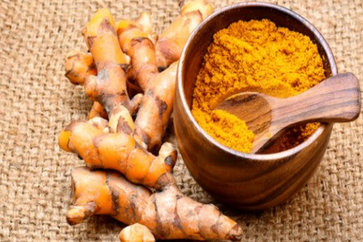
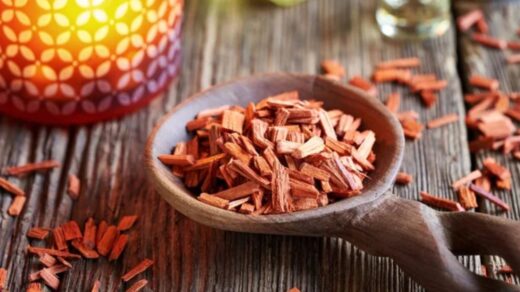


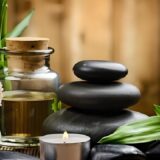





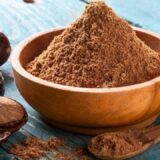














fitkari in english is alum and in marathi it is called as Turatee (tur as in toor daal and Tea)
I needed information about fatakari / alum powder .I really appreciate your help in this matter